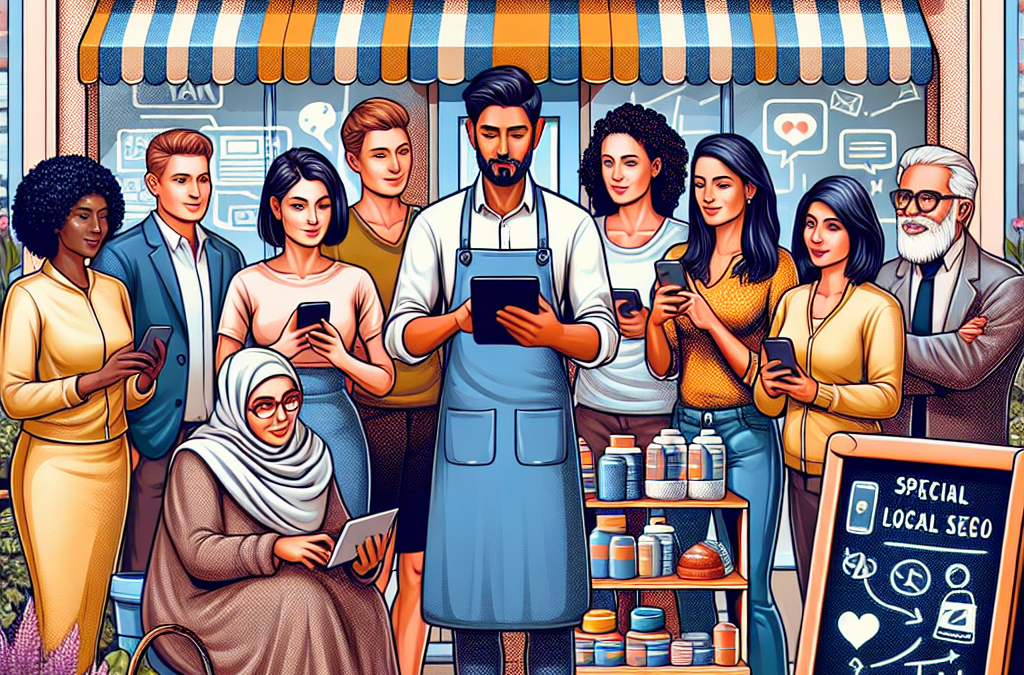Understand Your Local Market
Research Your Demographics
To kick things off, understanding who your local customers are is essential. Spend some time diving into demographic data for your area. This could be anything from age, gender, income levels to occupation. These factors really drive how you market your products and services.
There are tons of resources at your disposal. Websites like the U.S. Census Bureau or even specific local business directories can be gold mines of information. I’ve found that observing the foot traffic around your business can also provide insight into the type of people who are in the area—what they like, and what they might be looking for.
Once you’ve gathered this intel, jot down the key traits. It helps makes your marketing more focused. Knowing who you’re talking to creates a foundation for all your outreach efforts.
Engage with the Community
Being a good neighbor goes a long way in local marketing. Engaging with your community can foster loyalty and support for your business. Attend local events, sponsor community projects, or even collaborate with other local businesses. I remember when I sponsored a local school event; not only did it boost my visibility, but I also connected with a whole new crowd!
Utilizing social media, particularly community-oriented platforms or local groups can also enhance your engagement. Sharing news, events, or even highlighting local heroes helps position your brand as part of the community. Plus, it opens the door for potential partnerships!
Connect on a personal level, whether it’s through a chat on social media or by simply being visible in local events. This kind of engagement builds trust, which is paramount when it comes to capturing local customers’ attention.
Adapt Your Offerings
It’s crucial to tailor your products or services to fit local tastes and preferences. Use the insight you’ve gained from your market research to adapt your offerings accordingly. For instance, if you’re running a food business, consider introducing dishes that highlight local ingredients or traditional recipes.
Flexibility is key. Regularly solicit feedback from your customers and be open to making changes. In one of my previous ventures, we started a local favorites night that showcased community dish creations. It was a hit!
Additionally, think about seasonal offerings too. For example, if you’re based in a place with a vibrant autumn, why not offer promotions or products that celebrate the season? Adapting isn’t about changing who you are as a brand; it’s about resonating with your local customer base.
Leverage Local SEO Techniques
Optimize Your Website
Your website isn’t just your digital brochure—it’s your storefront. Start by ensuring it’s optimized for local searches. Use keywords that reflect your community, include your city or area in your title tags, meta descriptions, and content.
Adding structured data markup can also help search engines understand your location better. For example, markup your business address. This small step can improve your visibility significantly in local search results. Trust me; when I focused on this, the foot traffic literally doubled!
Moreover, keeping your website updated with local content such as news, events, or blogs can help engage visitors and improve your search rankings. Google loves fresh content, and it shows you’re active in the community.
Claim and Optimize Your Google My Business Listing
If you haven’t claimed your Google My Business (GMB) listing yet, what are you waiting for? This tool is a must-have for local businesses. Make sure all your information is accurate. Include your business hours, address, phone number, and photos. This is your chance to put your best foot forward in search results!
Encouraging satisfied customers to leave reviews can help grain credibility and improve your ranking. I always respond to reviews—both positive and negative. It shows that I value customer feedback, which builds trust across the board.
Hosting promotions specifically for people who find you through GMB can also incentivize more business. Little things like “check-in” discounts can create buzz and draw in foot traffic!
Utilize Online Advertising targeted locally
Online advertising, particularly pay-per-click (PPC) and social media ads, can be an effective way to reach local consumers. Focus your campaigns around specific locations to target nearby customers actively searching for what you offer.
Platforms like Facebook and Instagram allow for robust targeting options, letting you hone in on specific demographics or interests. When I started targeting a localized audience on social media, it not only increased engagement but also helped convert those leads into customers.
Don’t forget to measure your campaigns carefully. Keeping tabs on what’s working and what’s not means you can pivot your strategy quickly and efficiently—essential for keeping it relevant and effective. Nobody wants to spend money on ads that don’t deliver!
Foster Strong Community Relationships
Build Partnerships with Local Businesses
Partnering with local businesses can be one of the most advantageous moves you can make. Working together for events or promotions can expand both your reach and customer base. For example, collaborating on a community event can not only lighten the logistics load but also enrich the experience.
It’s amazing how much support you can provide to one another just by sharing resources and promoting each other. I’ve seen shops do cross-promotions where they highlight each other’s offerings—it’s mutually beneficial!
Additionally, reaching out to local influencers or bloggers can help enhance your visibility. These individuals often have a dedicated following and can be instrumental in spreading the word about your business. Just make sure its a natural fit for both of you to resonate well with your audience.
Host Local Events
Hosting events can create a buzz around your business and foster a sense of community. Whether it’s a neighborhood cleanup, local music night, or family-friendly crafts day, it gets people through your doors and allows them to experience your brand firsthand.
I vividly remember one community fair we organized. It brought in a wide range of locals, potential customers, and their families. Everyone had such a good time, and it left a positive impression. It’s not just about what you sell; it’s about what you offer beyond your products.
These events also provide an opportunity for you to gather valuable feedback, connect meaningfully with customers, and create lasting relationships. Those connections can lead to loyal customers who won’t just buy from you but recommend you to their friends and family!
Communicate Consistently
Staying in touch with your customers will keep you at the forefront of their minds. Regular newsletters or updates can be a powerful way to share promotions, events, or even helpful tips. Be the business that doesn’t shy away from communicating often!
Social media has revolutionized how we communicate. It’s essential to put out content that resonates with your audience—it could be a mix of promotions and fun, engaging content. Show off your personality and maintain that friendly tone in all your communications to foster a welcoming environment.
Ultimately, consistent communication builds engagement and creates a community around your brand. It’s this community spirit that can turn casual customers into loyal supporters who always have your back.
FAQ
1. What is the most important factor in targeting local customers?
Understanding your local market and demographics is crucial. By knowing who your customers are, you can tailor your messages and product offerings more effectively.
2. How can social media help in reaching local customers?
Social media allows for targeted communication and engagement with your local audience. By sharing community events, promotions, and engaging content, you can bring awareness and build relationships.
3. Why should I host local events?
Hosting events creates a sense of community, fosters connections, and builds brand awareness. It’s an excellent opportunity to engage directly with customers and showcase what you offer.
4. What role does SEO play in local marketing?
Local SEO ensures that your business appears in local search results, helping potential customers find you more easily. Optimizing your website and claiming your Google My Business listing are vital steps.
5. How can I keep customers engaged with my business?
Regular communication through newsletters, social media, and community interactions keeps your customers informed and engaged. Sharing updates, events, and valuable content helps maintain the relationship.


